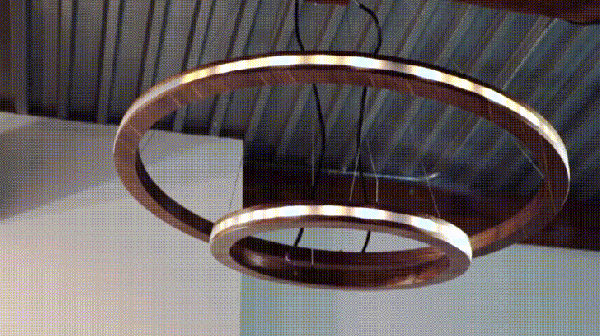Members of Pixelbar woke up to shocking news on Wednesday morning this week as they learned that a fire had destroyed the building housing their Rotterdam hackerspace. Pictures of the fire are pretty dramatic and show the entire building ablaze. We’re not familiar with Pixelbar specifically, but most hackerspaces seem to share space with other businesses in repurposed warehouses and other industrial buildings, and it looks like that was the case here. Local coverage doesn’t indicate that a cause has been determined, but they do say that “large batches of wood” were stored in or near the structure, which likely contributed to the dramatic display. There don’t seem to be reports of injuries to civilians or first responders, so that’s a blessing, but Pixelbar seems to have been completely destroyed. If you’re in a position to help, check out their GoFundMe page. As our own Jenny List, who currently lives in The Netherlands, points out, spaces suitable for housing a hackerspace are hard to come by in a city like Rotterdam, which is the busiest port in Europe. That means Pixelbar members will be competing for space with businesses that have far deeper pockets, so anything you can donate will likely go a long way toward rebuilding.
Saturn5 Articles
Hackaday Links: January 30, 2022
After all the fuss and bother along the way, it seems a bit anticlimactic now that the James Webb Space Telescope has arrived at its forever home orbiting around L2. The observatory finished its trip on schedule, arriving on January 24 in its fully deployed state, after a one-month journey and a couple of hundred single-point failure deployments. The next phase of the mission is commissioning, and is a somewhat more sedate and far less perilous process of tweaking and trimming the optical systems, and getting the telescope and its sensors down to operating temperature. The commissioning phase will take five or six months, so don’t count on any new desktop photos until summer at the earliest. Until then, enjoy the video below which answers some of the questions we had about what Webb can actually see — here’s hoping there’s not much interesting to see approximately in the plane of the ecliptic.
An (Almost) Free Apollo-Era Rocket
According to recent news reports, NASA’s Marshall Space Flight Center in Huntsville Alabama wants to give away a piece of history — an engineering test article of a Saturn I Block I booster. The catch? You’ll need to pay to haul it off, which will cost about $250,000. According to C|Net, the offer appears to be for museums and schools, but it’s likely that price tag would probably scare most private buyers off anyway.
On the other hand, if you are a museum, library, school, or university, you can score cheap or free NASA stuff using their GSAXcess portal. In general, you do have to pay shipping. For example, a flexible thermal blanket from the shuttle costs $37.28. A heat tile runs about $25.
The Majesty Of Saturn’s Rings Lighting Your Abode
[Modustrial Maker] is at it again with another seriously cool LED visualizer. This time around, he’s built pair of pendant lights inspired by the rings of Saturn.
The rings are made mostly of walnut plywood using a circle router jig to make the cut easier. If you are inspired to make these for yourself, [Modustrial Maker] is clear — the order in which you cut out the pieces of the rings is absolutely critical. The pieces are glued together — with any edges sanded smooth — and edgebanding applied using a hot air gun due to the curved surface before staining. Duplicate for the second (or more if you so choose!) rings. Be forewarned — a little geometry will be needed to find anchor points that will keep the rings properly balanced.
[Modustrial Maker] suggests an off-the shelf LED controller to handle the visualizations and lighting effects, but he used an Arduino Mega clone as the brains — code available here, a MonkeyJack MAX9814 electret mic, and a four-channel RF remote/transceiver to control the different modes. Pulsing along to the music, these rings make for sleek lighting indeed.
Continue reading “The Majesty Of Saturn’s Rings Lighting Your Abode”
Serious DX: The Deep Space Network
Humanity has been a spacefaring species for barely sixty years now. In that brief time, we’ve fairly mastered the business of putting objects into orbit around the Earth, and done so with such gusto that a cloud of both useful and useless objects now surrounds us. Communicating with satellites in Earth orbit is almost trivial; your phone is probably listening to at least half a dozen geosynchronous GPS birds right now, and any ham radio operator can chat with the astronauts aboard the ISS with nothing more that a $30 handy-talkie and a homemade antenna.
But once our spacecraft get much beyond geosynchronous orbit, communications get a little dicier. The inverse square law and the limited power budget available to most interplanetary craft exact a toll on how much RF energy can be sent back home. And yet the science of these missions demands a reliable connection with enough bandwidth to both control the spacecraft and to retrieve its precious cargo of data. That requires a powerful radio network with some mighty big ears, but as we’ll see, NASA isn’t the only one listening to what’s happening out in deep space. Continue reading “Serious DX: The Deep Space Network”















